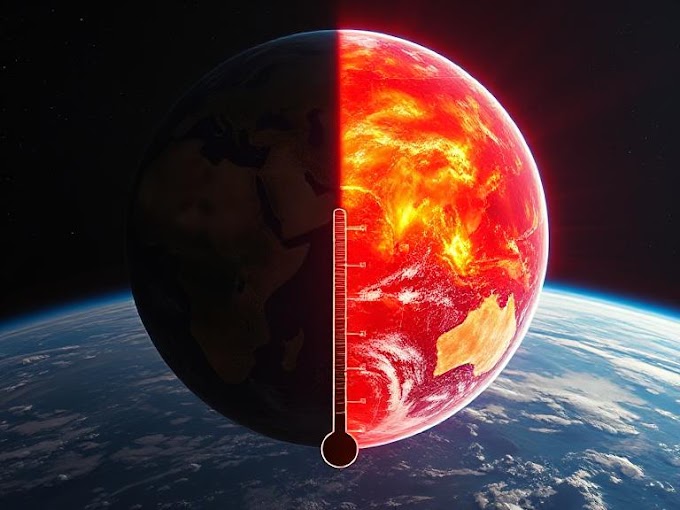As temperatures soar across the globe, millions of people are experiencing the harsh reality of climate change through increasingly intense and frequent heat waves. These extreme weather events are no longer isolated incidents but have become a defining characteristic of our changing planet. Understanding the connection between heat waves and climate change is crucial for preparing for a future where such events will likely become even more common and severe.
What Are Heat Waves and Why Are They Dangerous?
A heat wave is defined as a prolonged period of excessively hot weather, which may be accompanied by high humidity. The specific temperature thresholds vary by region, as communities adapt to their local climate norms. However, what makes modern heat waves particularly concerning is not just their intensity, but their duration and the compound effects they create.
Heat waves pose serious health risks, particularly to vulnerable populations including the elderly, children, pregnant women, and individuals with chronic health conditions. The human body struggles to regulate temperature when ambient temperatures remain elevated for extended periods, especially when nighttime temperatures fail to provide relief. This can lead to heat exhaustion, heat stroke, dehydration, and in severe cases, death.
Beyond immediate health impacts, heat waves strain infrastructure, increase energy demands, reduce agricultural productivity, and can trigger cascading effects across economic and social systems. Urban areas are particularly vulnerable due to the "urban heat island effect," where concrete and asphalt absorb and retain heat, making cities several degrees warmer than surrounding rural areas.
The Science Behind Climate Change and Extreme Heat
The relationship between climate change and heat waves is among the most scientifically robust connections in climate research. As greenhouse gas concentrations continue to rise in the atmosphere, they trap more heat from the sun, leading to a gradual increase in global average temperatures. This warming doesn't occur uniformly; instead, it shifts the entire distribution of temperatures, making extreme heat events more likely and more intense.
Scientists use a concept called "attribution science" to determine how much human activities have influenced specific weather events. This field has advanced significantly in recent years, allowing researchers to quantify the extent to which climate change has made particular heat waves more likely or more severe.
The physics behind this connection is straightforward: more energy in the climate system means more potential for extreme events. When the baseline temperature increases, what were once rare extreme temperatures become more common, and entirely new temperature records become possible.
Current Trends in Global Heat Wave Patterns
Recent decades have witnessed alarming trends in heat wave frequency, intensity, and duration worldwide. Meteorological records show that heat waves are occurring more often, lasting longer, and reaching higher peak temperatures than in previous generations. This trend is particularly pronounced in mid-latitude regions, including much of North America, Europe, and parts of Asia.
One of the most concerning developments is the increase in nighttime minimum temperatures. Historically, cooler nights provided crucial relief during heat waves, allowing both humans and ecosystems to recover from daytime heat stress. However, rising nighttime temperatures are reducing this natural recovery period, intensifying the health and environmental impacts of extreme heat events.
The timing of heat waves is also shifting. Many regions are experiencing extreme heat earlier in the spring and later into the fall, extending the traditional "heat season" and catching communities off-guard when they may be less prepared for extreme temperatures.
Regional Impacts and Case Studies
North America
The North American continent has experienced several record-breaking heat events in recent years. The Pacific Northwest, traditionally known for its mild summers, has been particularly affected. Urban centers like Seattle and Portland, where air conditioning was once uncommon, have had to rapidly adapt to temperatures that were previously unimaginable for the region.
The southwestern United States continues to experience prolonged periods of extreme heat, with some areas seeing temperatures exceed 115°F (46°C) for weeks at a time. These conditions stress water resources, increase wildfire risks, and create dangerous working conditions for outdoor laborers.
Europe
European heat waves have become increasingly frequent and severe, with multiple countries setting new temperature records in recent summers. The continent's aging population is particularly vulnerable to extreme heat, and many European cities are implementing new urban planning strategies to mitigate heat island effects.
Southern European countries, already accustomed to hot summers, are experiencing temperatures that challenge even their adaptive capacity. Meanwhile, northern European regions are facing unprecedented heat events that their infrastructure and social systems were never designed to handle.
Asia and Other Regions
Asia has witnessed some of the most extreme heat events globally, with parts of India and Pakistan experiencing temperatures above 120°F (49°C). These events have coincided with power outages, water shortages, and significant mortality rates, highlighting the compound nature of heat wave impacts.
Australia has also experienced increasingly severe heat waves, contributing to devastating wildfire seasons and stressing both urban and rural communities across the continent.
The Role of Weather Patterns and Climate Systems
Heat waves don't occur in isolation; they are often associated with specific atmospheric patterns that can be influenced by climate change. High-pressure systems that create "heat domes" can become more persistent, trapping hot air over regions for extended periods. Climate change may be altering these patterns, making such persistent systems more likely.
The jet stream, which helps regulate temperature patterns across the Northern Hemisphere, appears to be becoming more erratic as Arctic regions warm faster than other parts of the planet. This can lead to unusual weather patterns, including both extreme heat and extreme cold events, as the jet stream's normal flow becomes disrupted.
Ocean temperature patterns also play a crucial role in regional heat wave development. As ocean temperatures rise globally, they can contribute to more intense and longer-lasting atmospheric heat patterns over land areas.
Health and Social Consequences
The health impacts of heat waves extend far beyond direct heat-related illnesses. Extreme heat can exacerbate existing medical conditions, reduce the effectiveness of certain medications, and increase the risk of accidents and injuries. Mental health impacts are also significant, as extreme heat can increase aggression, reduce cognitive function, and contribute to social tensions.
Socioeconomic factors play a crucial role in heat wave vulnerability. Low-income communities often have less access to air conditioning, live in housing with poor insulation, and may work in outdoor occupations with greater heat exposure. This creates environmental justice concerns as climate change disproportionately affects the most vulnerable populations.
Emergency healthcare systems face enormous strain during heat waves, with emergency room visits typically increasing dramatically during extreme heat events. This can overwhelm medical facilities and create cascading effects throughout the healthcare system.
Economic and Infrastructure Impacts
The economic costs of heat waves are substantial and growing. Energy demands skyrocket as cooling systems work harder, often leading to grid failures and blackouts precisely when electricity is most needed. Transportation systems can suffer as roads buckle, rail lines warp, and airports cancel flights due to extreme temperatures.
Agricultural impacts are particularly severe, as crops and livestock suffer from heat stress. This can lead to reduced yields, increased food prices, and supply chain disruptions that affect consumers far from the heat-affected regions. Water resources also face increased demand while supply may be reduced due to increased evaporation and reduced precipitation in some regions.
Labor productivity declines significantly during extreme heat events, particularly for outdoor workers in construction, agriculture, and other industries. This creates economic losses while also raising serious occupational health and safety concerns.
Adaptation and Mitigation Strategies
Communities worldwide are developing innovative strategies to cope with increasing heat wave risks. Urban planning initiatives focus on increasing green spaces, improving building design, and creating cooling centers for vulnerable populations. Cool roof programs, which use reflective materials to reduce heat absorption, are being implemented in many cities.
Early warning systems have proven effective in reducing heat wave mortality by alerting people to take protective measures. These systems are becoming more sophisticated, incorporating weather forecasts, health risk assessments, and targeted communications to reach vulnerable populations.
Building codes and standards are being updated to ensure new construction can withstand higher temperatures while maintaining energy efficiency. Retrofit programs help improve existing buildings' resilience to extreme heat.
Looking Toward the Future
Climate projections suggest that heat waves will continue to intensify and become more frequent as global temperatures rise. Even if greenhouse gas emissions are reduced rapidly, some additional warming is already locked in due to the long-term nature of the climate system.
However, the severity of future heat wave impacts will depend significantly on our collective response to climate change. Aggressive mitigation efforts to reduce greenhouse gas emissions can limit the extent of future warming, while improved adaptation measures can help communities better cope with the heat waves that are already inevitable.
Investment in research and development of new cooling technologies, improved weather forecasting, and better understanding of health impacts will be crucial for building resilience to extreme heat events.
Conclusion
Heat waves represent one of the most direct and immediate ways that climate change affects human lives and communities. As these events become more frequent and severe, society must respond with both urgency and strategic planning. The connection between heat waves and climate change is clear and scientifically established, making action both necessary and time-sensitive.
Protecting communities from extreme heat requires coordinated efforts across multiple sectors, from urban planning and public health to energy systems and social services. While the challenges are significant, proactive measures can significantly reduce the impacts of heat waves and save lives.
The growing threat of extreme heat underscores the broader urgency of addressing climate change through both emission reductions and adaptation measures. As we face a future with more frequent and intense heat waves, our response will determine whether these events remain manageable challenges or become overwhelming crises.
Understanding heat waves as a manifestation of climate change helps us prepare for a reality where such events are no longer exceptional but part of our new normal. Through science-based planning, community resilience building, and continued efforts to address the root causes of climate change, we can work toward a future where extreme heat events, while perhaps unavoidable, need not be devastating.

.png)




.png)
.png)

.png)
